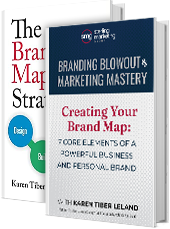
Summary:
The article highlights the evolving landscape of public relations (PR) in the modern era, emphasizing shifts due to factors like the COVID-19 pandemic and changes in media consumption. It stresses the importance of understanding PR’s role in shaping public image and credibility, especially for CEOs and businesses. Key points include the need for professional PR expertise, the significance of maintaining a favorable public image, and the dos and don’ts of effective PR strategies. It also offers insights on building a successful PR strategy, including research, content quality, finding suitable partners, and investing wisely in PR tactics.
Modern-day public relations are different from what they used to be. The COVID pandemic and shifts in the political landscape have changed how PR campaigns are created and executed. I’ve been helping CEOs, entrepreneurs, and experts design public relations strategies and secure media placement for over two decades. As we move into 2023, it’s critical to understand the public relations landscape as it stands today.
I’ve booked hundreds of interviews, book reviews, and mentions for clients in top media, including the New York Times, Fortune, Forbes, Reuters, Fox Business News, Inc, Entrepreneur, MSNBC, CBS MarketWatch, the Wall Street Journal, and countless others. And in all that time, I’ve never seen a media environment like the one we are in today.
The need to rethink how we pursue public relations for our personal, executive, and business brands has never been more critical. The signs of changes in PR were already showing before the pandemic, but the onset of the COVID crisis and its aftermath have accelerated these changes. And it’s not back to normal concerning PR – everything is different.

What is PR?
As a start, the definition of PR has undergone a few significant changes. According to the Oxford Language dictionary public relations is defined as “The professional maintenance of a favorable public image or the state of the relationship between the public and a company or other organization or a famous person.”
Let’s break that down in the face of today’s modern media landscape, starting with the first significant word in the definition – “professional.”
According to the Bureau of Labor Statistics employment of public relations specialists is projected to grow 8% from 2021 to 2031, faster than the average for all other occupations.
Unfortunately, for better or worse, anyone with a computer and access to the Internet can hang out a shingle and call themselves a “PR professional” or “Agency.” This means that there will be a wide variation in the degree of professionalism (and competency) of the public relations person or firm a company engages.
In addition, the Great Resignation promoted many folks in the marketing and communications space who had been working for a company to leave and set up their own shop.
“Marketers have some of the most coveted skills,” says Karen Mangia, VP of Customer and Market Insights at Salesforce. “Skills like social media, writing, graphic design all help you work more in an Uber-like model. They’re highly portable, valued and in demand. Marketing lends itself to the flexibility, autonomy, and choice that people want in their work environment.”
As a result, more people with a marketing background are on the scene. However, doing media placement and PR with financial and reputational support behind you is a different ball of wax than beating the bushes as an individual or small agency.
I receive calls weekly from CEOs, entrepreneurs, authors, and experts disappointed with the results obtained from expensive PR campaigns that could have lived up to their promises.
Does this mean public relations are not a good investment in brand building? Not at all. It means that those hiring a PR firm need to follow the old buyer beware adage and do their due diligence regarding the background, true expertise, and professional capacity of those they are looking to engage.
Moving onto the second word in the definition – “maintenance.” The focus of PR has gone from simple maintenance to the non-negotiable need to create a public image and ensure it continues to be relevant.
Consider one study from Weber Shandwick and KRC Research which reported that 87% of global executives consider CEO reputation as a factor in attracting investors. In addition, the survey found:
- Global executives attribute 45% of their company’s reputation to the reputation of their CEO.
- A CEO’s reputation plays an important role in attracting employees to a company (according to 77%of respondents) as well as motivating them to stay (70%).
- Global executives attribute 44% of their company’s market value to the reputation of their CEO.
The bottom line is that every businessperson needs to consider establishing a “public” reputation as an obligation, not an option.
Finally, let’s look at the last part of the definition, “the relationship between the public and a company or other organization or a famous person.”
While the need for a company and organization to have this relationship with the public has only become more robust, being a “famous person” is no longer a prerequisite to engaging in PR.
In an age where just a few clicks can produce vast amounts of information on almost anyone, almost no one can afford to be off the radar. Authentically, everyone is famous as soon as someone starts to check them out on the Internet.
While this had been a trend pre-COVID, with everyone sitting at home for more than a year with tons of time on their hands, Googling dramatically accelerated the importance of creating an online presence for everyone from the secretary to the CEO.
Why is Public Relations Important?
According to the Pew Research Center, only 27% of U.S. adults trust the information they find on social media. But 56% trust national news media, and 75% trust local news outlets.
Public relations offer a CEO or company the opportunity to shape how the public sees their brand, their clients, and potential clients specifically.
All businesses need public relations, regardless of their size or industry. The benefits of good public relations include:
- Increases a personal or business brand’s overall credibility through third party validation.
- Attracts the target market by providing a constant drip of information about the CEO or company.
- Elevates brand awareness and builds brand image.
- Assists with lead generation.
- Attracts investors
How to Build a PR Strategy
In essence, a PR strategy helps a business design, implement, and measure the effectiveness of its public relations tactics over time. However, a public relations strategy does not stand independently; instead, it is an essential element of an overall branding and marketing plan.
It’s important to note that a public relations strategy is not necessarily a long-term proposition. For example, it could be a campaign that goes on for a year with quarterly goals and objectives. But it can also represent a single campaign around a specific event, such as a product launch, celebration of a key anniversary, or publication of a book. Regardless an effective public relations strategy has some common elements, including:
- Do your research. Before investing a great deal of time and money in a PR strategy, it’s prudent to do your research, including a SWOT analysis, industry trends, competitors (and their PR approach), customer points of view, and needs. This research aims to ensure that the strategy created resonates with the desired audiences.
For example, one of my clients Josh Peck, the CEO of True Code Capital had written a book on investing in cryptocurrency. The book came out around the same time as the infamous FTX meltdown. Rather than do a generic media push and press release about the client’s new book (which is a significant no-no, but more on that later), we analyzed the meltdown and mentioned the book for credibility. The result? Placements in The Wall Street Journal, CBS News, Entrepreneur, Forbes, US News, and more.
- Put out high-quality content. The most impactful public relations campaigns (one-offs or long-term) share four key elements: On-point messaging, helpful content, addressing the right audience, and a dash of good timing.
While from the outside, it can often seem like successful public relations campaigns are just a matter of luck (which doesn’t hurt), by weaving these four critical elements into a PR strategy, the chances of a campaign being successful and achieving the desired goals is greatly increased.
PR that has an underlying story that is interesting, entertaining, provocative, or useful has a significantly greater chance of success. If a company can provide a core underlying point of view, vision or mission that aligns with their customers, the PR strategy stands a better chance of success.
The 2022 Edelman Trust Barometer report found that when considering a job, 60% of employees want their CEO to speak out on controversial issues they care about, and 80% of the general population want CEOs to be personally visible when discussing public policy with external stakeholders or work their company has done to benefit society.
CEOs are expected to shape conversation and policy on jobs and the economy (76%), wage inequity (73%), technology and automation (74%), and global warming and climate change (68%).
- Find a suitable partner. It’s one thing to research and develop a great public relations strategy – it’s another to execute it. Many good plans have been waylaid by poor implementation. For this reason, it’s critical to find a partner(s) that can take the vision a company has for PR and put it in place in a way that is authentic and impactful.
As mentioned earlier in the article, there are many options for PR partners today. Some are highly qualified experts who offer personal service. Others will take a client’s money and pass the account off to an inexperienced intern to manage. There are agencies, branding firms, boutique consulting companies, press release mills, and individual practitioners competing for a company’s marketing dollars.
Finding the right partner requires due diligence. Look for a company or practitioner who is experienced enough to understand what a company needs, offers personalized service, discloses who exactly will be on the account, and is willing to adjust as needed as the campaign proceeds.

Deciding how and what to invest in public relations.
As with all other marketing and branding tactics, a dramatic range of costs is associated with creating a PR campaign. When the CEO of a company considers how to pursue a public relations strategy and what to invest in it, there are three levels to keep in mind.
Low or no cost option. Think of this as the routine maintenance item of PR. Research shows that more than nine-in-ten journalists in the United States (94%) use social media for their jobs, according to a recent Pew Research Center survey of reporters, editors and others working in the news industry.
As a result, one of most important, and low-cost ways, of engaging with modern PR is to have up to date, robust, and relevant social media. I speak with dozens of CEOs and executives every year that misunderstand and undervalue the critical importance of establishing and nurturing their personal (and company) social media sites.
Think of it this way. A journalist for a major newspaper is writing a story on soy allergies and the possible severe allergic reaction some children may have to it. The journalist Googles “severe soy allergies in children,” and finds posts on LinkedIn and Twitter by a mother who went through a journey with her own child who had a severe soy allergy and wrote a self-published book about it.
The journalist likes what he sees and reaches out to the mother for an interview. A few weeks later, the mother and her book are featured in a New York Times story on kids and soy allergies. If this sounds farfetched, this is what happened to a client of mine. Why did she get the coveted spot in one of the top newspapers in the world, even though she did not have a medical degree?
She had a good story, well researched and informative content, and great timing. But the other thing my client had was a robust social media with consistent, high-quality content. The cost of creating and posting that content paled in comparison to the priceless nature of a mention in the New York Times.
Moderately expensive option. According to research from Podcast Insights, 51% of Americans reported listening to a podcast in 2022. The popularity of podcasts, make them an effective tool for PR and marketing. They can help a CEO, executive, entrepreneur, expert, or author reach a niche targeted audience. Other research from Buzzsprout found that 69% of respondents say podcast ads increase their awareness of products, brands, and services.
There are two ways a podcast can fit into a public relations campaign. A CEO or executive can host a podcast of their own, or they can appear on other’s podcasts. In some cases, an overachieving leader might do both.
Hosting a podcast is by far more involved and expensive than a PR campaign to be a guest on other’s podcasts. To host a podcast requires finding guests, setting up the technical requirements, prompting the podcast and a host of other activities.
A far easier, and less expensive, podcast PR strategy is for a CEO or entrepreneur to reach out and pitch being a guest. The easiest path to achieve this to hire a company who specializes in podcast placement.
A good resource can help a CEO find the right shows, and the right audience, to promote their personal brand, business, book, or product.
More expensive, but important option. The most expensive, but often highly effective path to PR is to hire a public relations agency, branding/marketing firm, or PR expert to write, distribute, follow up on, and pursue media hits. The trick is to find the right partner to assist with the process.
The key asset of this tactic is the press release. As with many other aspects of PR, the press release has undergone a revolution thanks to the pandemic and political changes.
Prior to 2019, the media cycle may have been 24 hours long, but in-depth interviews on relevant topics were still a focus of TV journalists. Today, the media cycle is minutes, not hours.
I’ve had countless clients scheduled for television appearances that were canceled last minute due to political foofaraw. As for in-depth interviews on topics that are not related to reactive, in the moment, crises, they are rare.
Non the less, media placement is still possible. The key is relevance and value. The best press releases and media pitches tie the client’s topic into something happening at the time. Effective pitches offer highly useful information, to a targeted audience. And finally press releases that hit the mark are aimed at journalists for whom the information is on point and provide highly specific (rather than general) content.

Four Main Dos and Don’ts of PR.
While there are no hard and fast rules that, if followed, are guaranteed to produce results in a public relations campaign, four do’s and don’ts increase the odds.
- Do: Clearly define your expertise. According to glean.info, 89% of journalists say that subject matter expertise is what they’re looking for when they talk to a source.
They’re not looking for someone with an uninformed opinion. They’re not looking for someone who’s done this once. Journalists want to speak with someone who is a bonafide subject matter expert in their field.
The more of a subject matter expert a CEO, executive, entrepreneur, author, or expert can prove themselves to be, and the clearer they can define that expertise, the better chance a journalist will use them as a source.
Don’t: Try to be all things to all people. Pushing the envelope where your subject expertise lies will peg you as a poser to any experienced journalist.
- Do: Set reasonable goals for your PR campaign. Public relations is a marathon, not a sprint. The measure of a successful strategy is a combination of results, more than a specific outcome.
For example, the number and quality of media placements, increased social media followers, the uptick in potential client inquiries, or visits to a website, etc. Even just the ability to place the logo of a well-known media outlet on your website that edifies your credibility has great value.
Don’t: Put all your eggs in one outcome basket. Limiting the results of a PR strategy to just one outcome greatly reduces the chances of success. Focusing on a single outcome (i.e., being on CNN) misses the underlying opportunities that PR provides.
- Do: Keep your pitch related to something happening now. It could be an event, time of year, holiday, or issue, but pitches and public relations campaigns tied to current events are of greater interest to journalists. Remember they are on deadline and on task to report on what is happening now, not what a company or CEO wants them to cover.
Don’t: Send general, non-relevant pitches to the media. Media today is busier, more overwhelmed, and understaffed than ever. Pitches with general topics that have no relation to what is happening are an irritation to journalists. A pitch with no relatable angle, helpful information, or expert insight doesn’t help journalists do their job.
- Do: Make the PR pitch about the value it creates for the audience. Ultimately an excellent public relations campaign is not about the CEO or company but about contributing to the viewer. Ironically, the most impactful public relations is not about the subject itself but the subject matter.
Don’t: Make it all about you. Nothing will get a pitch deleted from a journalist’s inbox faster than a press release that scream, “me, it’s all about me.”
How SMG Can Help with Your 2023 PR Strategy.
SMG has worked with hundreds of CEOs, authors, entrepreneurs, executives, experts, and authors to craft personalized and highly effective public relations strategies.
Our formal outreach to targeted media has resulted in hundreds of placements in top publications, including Fortune, Forbes, Inc.com, Entrepreneur, Reuters, Fox Business News, CNN, CNBC, Oprah, Fast Company, and many more.
As a part of our implementation engagement, SMG will secure media placements across radio, TV, print, and online outlets, create and manage the CEO and company social media, conduct thought leadership media training, and manage all aspects of the PR strategy.
For an initial assessment of your public relations needs, book an initial consultation with me at no charge. I will review your current CEO and company reputation and give you at least one or two specific ideas you can use to build and implement a robust PR strategy – no sales, just helpful information, and insight. You can book a session with me here.
